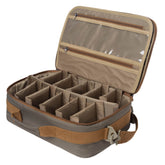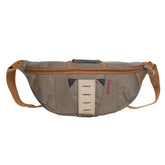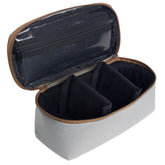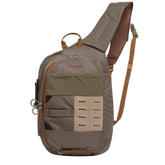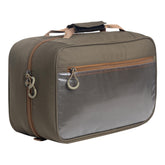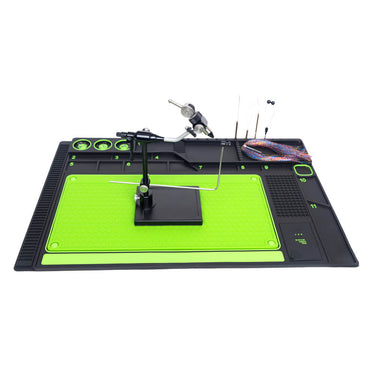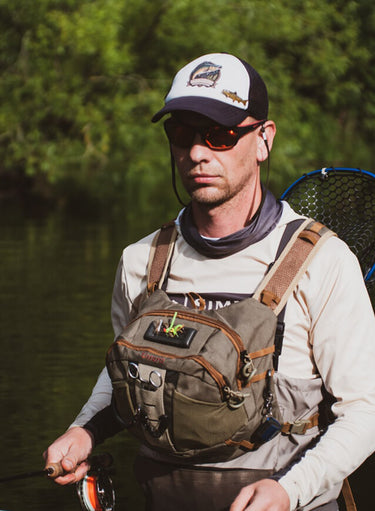Switch Fly Lines vs Scandi Heads: Choosing the Right Line for Steelhead Fishing
When targeting steelhead, choosing between switch lines and Scandi heads can significantly impact my fishing success. Switch lines are often more versatile, allowing me to easily switch between different casting techniques, while Scandi heads excel in shorter, more precise casts needed in tight spaces. Understanding these differences helps me optimize my approach based on the conditions I face.

The decision between using a switch rod or a single-hand rod largely depends on the environment and my preferred casting style. While switch rods provide added power and versatility for two-handed casting, single-hand rods can be more agile and easier to manage in certain situations. Knowing when to use each can enhance my overall experience on the water.
Integrated switch lines and shooting heads also offer distinct advantages. Integrated lines provide a seamless setup, which can be more user-friendly, whereas shooting heads allow for greater customization in line length and weight. By evaluating my fishing style, I can determine which option best suits my needs.
Switch Fly Lines and Scandi Heads for Steelhead
In choosing the right line for steelhead fishing, I consider the unique characteristics of switch fly lines and Scandi heads. Both options offer distinct advantages that cater to different fishing situations and techniques.
Characteristics of Switch Fly Lines
Switch fly lines are designed for versatility. They accommodate both switch and single-handed rods, enabling me to use a range of casting techniques. Typically, these lines have a front taper that aids in turnover and a thicker belly that helps me maintain control over larger flies.
I find that switch lines generally have a sinking or floating tip, which allows flexibility depending on the water conditions. The line's specific weight is crucial, as I match it to the rod's specifications for optimal performance.
Advantages of Scandi Heads
Scandi heads excel in long, delicate presentations. Their shorter length and lightweight design allow for precise casting, even with minimal effort. This characteristic is particularly beneficial in low-water conditions where I want to present my fly gently.
Additionally, Scandi heads allow for easy line management when performing lifts and mends. They typically feature integrated shooting lines, which reduces the chances of tangling during casts. I appreciate how these heads enable me to quickly switch between different tips, enhancing my adaptability on the water.
Optimal Conditions for Each Line Type
Switch fly lines are ideal for varied water conditions, including those that require quick adjustments. I often reach for them in rivers with changing currents or when targeting steelhead in deeper runs.
In contrast, I find Scandi heads more effective in clear, low-water scenarios. Their design supports subtle presentations, making them perfect for spooky fish. The ability to easily control and adjust my line allows for a more strategic approach in these delicate situations, increasing my chances of success.
Comparison of Switch Lines and Spey Lines
When choosing between switch lines and Spey lines, I focus on their specific characteristics, uses, and the scenarios in which each excels. Each type of line offers distinct advantages that influence my decision based on the fishing conditions or the target species.
Understanding Switch Lines
Switch lines are designed for versatility. They are longer than standard single-handed lines but shorter than traditional Spey lines. This allows me to cast with both switch rods and single-hand rods. The weight distribution of switch lines usually falls toward the front, aiding in roll casts and short to medium range presentations.
Switch lines often have a multifaceted taper that accommodates various casting styles. This flexibility makes them a great choice for situations where quick adjustments are necessary, like fishing pockets or small rivers.
Understanding Spey Lines
Spey lines are geared toward the two-handed casting technique inherent to Spey rods. They are typically longer, with a more gradually tapering profile. This design facilitates longer casts and presents flies effectively in larger water bodies.
The belly of the line carries additional weight to promote effortless roll casts or Spey casts with minimal backcast room. Spey lines can also accommodate heavier tips, making them suitable for deeper water presentations or when fishing with larger flies.
Determining the Right Time to Use Each
Choosing between switch and Spey lines hinges on several factors. For narrow streams or situations requiring tight casts, switch lines excel due to their shorter length and ease of maneuverability.
In contrast, when I'm on larger rivers where distance and control matter, I lean towards Spey lines. Their design allows for more powerful casts and better handling of wind. Consideration of the rod type, water conditions, and my fishing goals ultimately helps in selecting the optimal line.
With these insights, I can make informed decisions that enhance my steelhead fishing experience.
Choosing Between Switch Rods and Single-Hand Rods
When selecting between switch rods and single-hand rods, I consider performance differences and situational preferences that affect my fishing experience. Each rod type has distinct advantages, influencing the way I approach steelhead fishing.
Performance Differences
Switch rods typically range from 10 to 12 feet in length, allowing for greater casting distance and increased line control. This longer length aids in mending line and covering more water efficiently. They excel in providing better leverage for fighting larger fish, making them suitable for scenarios where I anticipate challenging conditions.
Single-hand rods, on the other hand, are generally shorter, ranging from 8 to 9 feet. Their compact size makes them more maneuverable in tight spaces. This rod type is often easier to cast for longer periods without fatigue. While they may lack the distance capabilities of switch rods, they shine in situations where precision and quick casts are needed.
Situational Preferences
I prefer switch rods during situations with larger streams or when targeting aggressive steelhead. The longer rod provides an advantage when navigating obstacles or windy conditions. The versatility of switch rods allows me to easily switch techniques from overhead casting to roll casts, adapting to the water flow.
Single-hand rods work best in smaller streams or when I require immediate responsiveness. I often use these rods for delicate presentations and in areas where stealth is crucial. The lighter weight means I can cover smaller water effectively without spooking fish. Each rod type has its time and place, and my choice depends on the specific fishing conditions.
Integrated Switch Lines Versus Shooting Heads

In choosing between integrated switch lines and shooting heads, I consider their respective advantages and limitations. Each option has specific use cases that can enhance my efficiency and effectiveness when targeting steelhead.
Benefits of Integrated Switch Lines
Integrated switch lines offer a seamless design that combines the head and running line into a single unit. This eliminates the need for a separate leader connection, providing a cleaner profile for casting.
Advantages I appreciate include:
- Ease of Use: Integrated lines are ready to fish straight out of the box, making setup faster.
- Reduced Tangling: With fewer components, tangles during casting tend to be minimized.
- Consistent Performance: These lines maintain consistent diameter and taper, providing stable control and sensitivity.
I find integrated switch lines particularly beneficial for techniques like Skagit casting in varying conditions. They enhance my ability to make smooth presentations, especially in tight or challenging spots.
When to Opt for Shooting Heads
Shooting heads consist of a separate head and running line, which I can customize based on specific needs. This modularity allows for tailored setups depending on factors like water conditions and desired casting distance.
Key benefits of using shooting heads include:
- Versatility: I can easily switch heads to match changing water conditions or target species.
- Distance Casting: The heavier heads can generate greater line speed, aiding long-distance casts.
- Fine-Tuned Control: By using different heads, I can adjust sink rates based on the water column where steelhead may be located.
Choosing shooting heads is ideal when I need adaptability and precision in varied environments. This option allows me to optimize my approach based on the day's fishing conditions.



